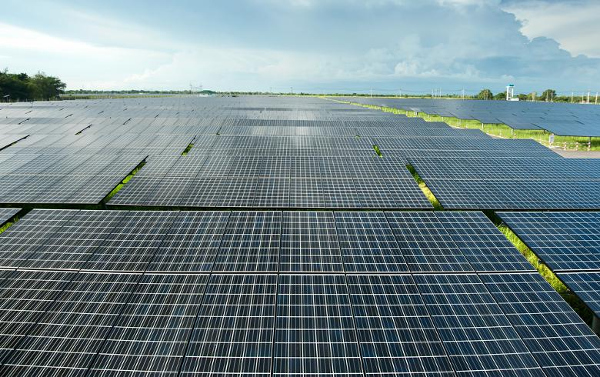India’s Prime Minister Narendra Modi officially launched on Tuesday the construction of a megapark that will produce 30 gigawatts (GW) of renewable energy and will be the world’s largest renewable energy facility.
The Hybrid Renewable Energy Park in the district of Kutch in Gujarat will be the country’s largest renewable energy generation park, the office of the prime minister said ahead of Modi’s visit to the site.
“The hybrid renewable energy park will be largest in the world and generate 30,000 megawatts of power,” AFP quoted the prime minister as saying at the ceremony.
The park, on 72,600 hectares of land, will have a dedicated hybrid park zone for wind and solar energy storage and an exclusive zone for wind power generation, the office of the Indian prime minister said.
Earlier this year, India’s Power and New & Renewable Energy Minister R K Singh said that the country would have 60 percent of its installed electricity generation capacity from clean energy sources by 2030. India, which is expected to be the fastest-growing energy demand market in the coming decades, also aims for 510 GW of renewable energy capacity by 2030, including 60 GW from hydropower.
This year, India’s renewable energy capacity, including hydropower and projects under development, is around 190 GW, the minister said in July.
According to BP’s Energy Outlook 2020, India will see growth in primary energy through 2050 under all scenarios. Renewable energy growth will be intense in the three BP scenarios with average annual growth in the band 9 percent—13 percent, BP said. As a result, renewable energy is set to become the largest source of primary energy in India in 2050 in BP’s Rapid and Net Zero scenarios, and the second-largest source of primary energy under the Business As Usual (BAU) scenario after coal.
Source: OilPrice
You may also like
-
Dot Simplifies Approval Processes For Telecom Licenses And Wireless Equipment
-
PM to Inaugurate SEMICON India 2024 on 11th September
-
Shri Piyush Goyal Sets 500 Million Tonnes Domestic Steel Production Target by 2034
-
NHAI to Track Around 100 Toll Plazas with GIS-Based Software for Seamless Movement of Traffic at National Highways
-
“Marching Towards Building A Digitally Connected Bharat and An Atmanirbhar Telecom Sector”: Union Minister Jyotiraditya Scindia
